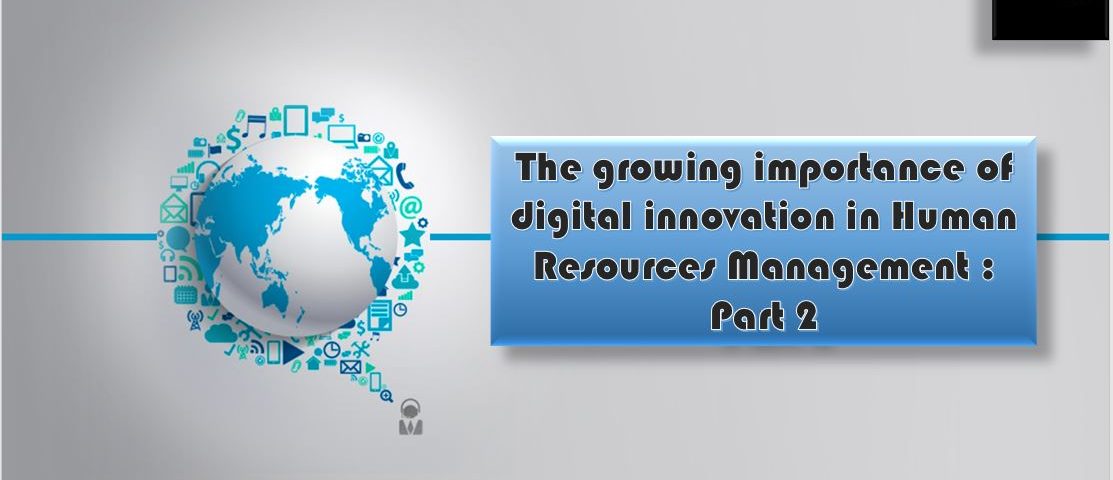- Du savoir faire au faire savoir.
- +237 6 61 51 51 31
- +237 6 94 25 39 19
- gitech@gitech.info
[HRM] [DIGITAL CHANGES] The growing importance of digital innovation in Human Resources Management part 2

[Marketing Digital][SEO] Courte Traîne & Longue Traîne en SEO
14 septembre 2019
[Marketing Digital] [SEO] Comment trouver des mots-clés pour son site ?
12 octobre 2019User Review
( votes)An HR professional, whether executive, manager, strategic planner, change agent, administrative expert, or employee champion, interfaces with the technologies used within an organization. As a growing number of HR- specific technologies emerge, the organization’s culture and its disposition toward new technology become increasingly relevant. It is HR’s responsibility to assess the organization’s readiness for new technologies.
A 2017 McKinsey article titled “Culture for a Digital Age” provides in- sight to the assessment of organizational readiness for new technology. The article identifies culture as one of the main barriers to a company’s successful implementation of new technologies. The following are key elements of culture that prohibit an organization from moving forward and embracing new digital-age technologies:[1]
- Fear of taking risks
- A lack of customer-centric mentality
Overcoming these cultural roadblocks is the job of the HR department.
Some strategies are needed to accompany the organization when digital changes are going to happen or are happening .
THE FEAR OF TAKING RISK
A risk averse culture can be a particular issue in heavily regulated industries, where conformity is the norm. An organization that is risk averse will lack innovation. Risk-taking must not be reckless and implemented on a large scale; rather, it should be inculcated in the culture by allowing small risks. Giving frontline workers the tools and decision-making ability to handle issues can combat risk averseness. A culture of fear leads to people avoiding risks. Decision making is slowed down when people seek higher approval to cover their backs. The lack of trust and resulting lack of progress can be frustrating for many.
It also frees up the otherwise rigid approach to decision- making in general.
A LACK OF CUSTOMER CENTRIC MENTALITY
The lack of a customer-centric view also restricts the adoption of new technologies. When the customer comes first, management is compelled to provide the tools to properly serve the customer. These should be leading- edge approaches; for example, collecting and analyzing big data available through practices and systems that provide current, ongoing information about the customer interests, preferences, and needs. A customer focus requires investment in the technologies and tools necessary to provide excellent customer service.
HUMAN RESOURCES MANAGER STRATEGIES TO INTRODUCE NEW TECHNOLOGIES
Elements like the organization’s vision and mission, management philosophy, the tone of labor-management interactions, and the degree of agreement about the technology also impact an organization’s readiness for a new technology.
Is the organization adaptive and receptive to new technologies, or is it more resistant to technology and the changes it will render?
Does the organization view technology as fundamental to its success, or are the technologies viewed as peripheral to the organization’s goals and therefore of lesser priority?
The human resource manager needs to identify his organization predisposition toward technology.
Because it will govern how you approach introducing a new technology. This is especially important if the new technology is one that will upset the organizational norms. In that case, he will need to be an employee champion who is also a change agent. His assessment of the organization’s stance toward technology in general then provides an indicator of the level of resistance you can expect toward new HR technologies. The intensity of his role as change agent will vary based on the receptivity of your organization toward technology.
The more resistant to technology your employees and organization are, the more preliminary work you will have to do.
Our next article will focus on the new competencies needed to fulfill the role of the digital HR Manager.
Thank you for taking the time to read this article.
[1] (Julie Goran, 2017)
How useful was this post?
Click on a star to rate it!
Average rating 5 / 5. Vote count: 1

